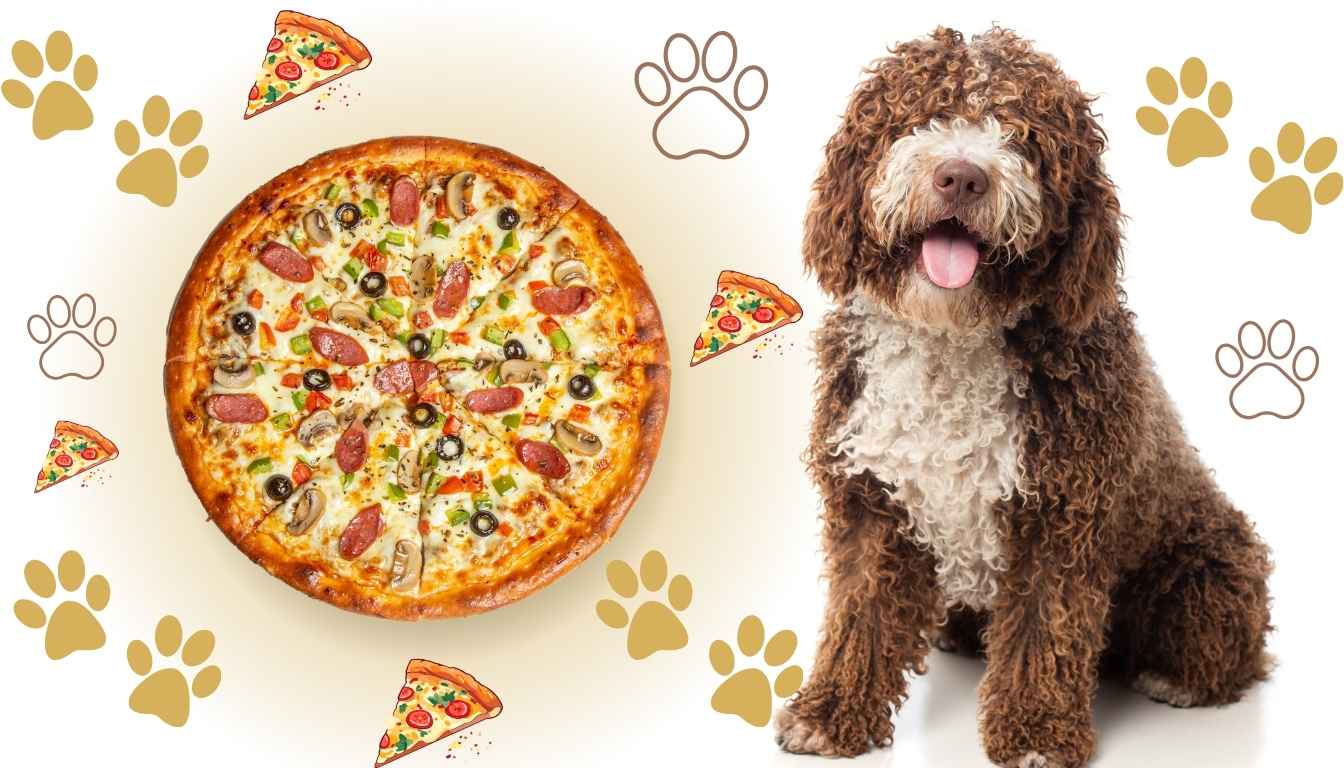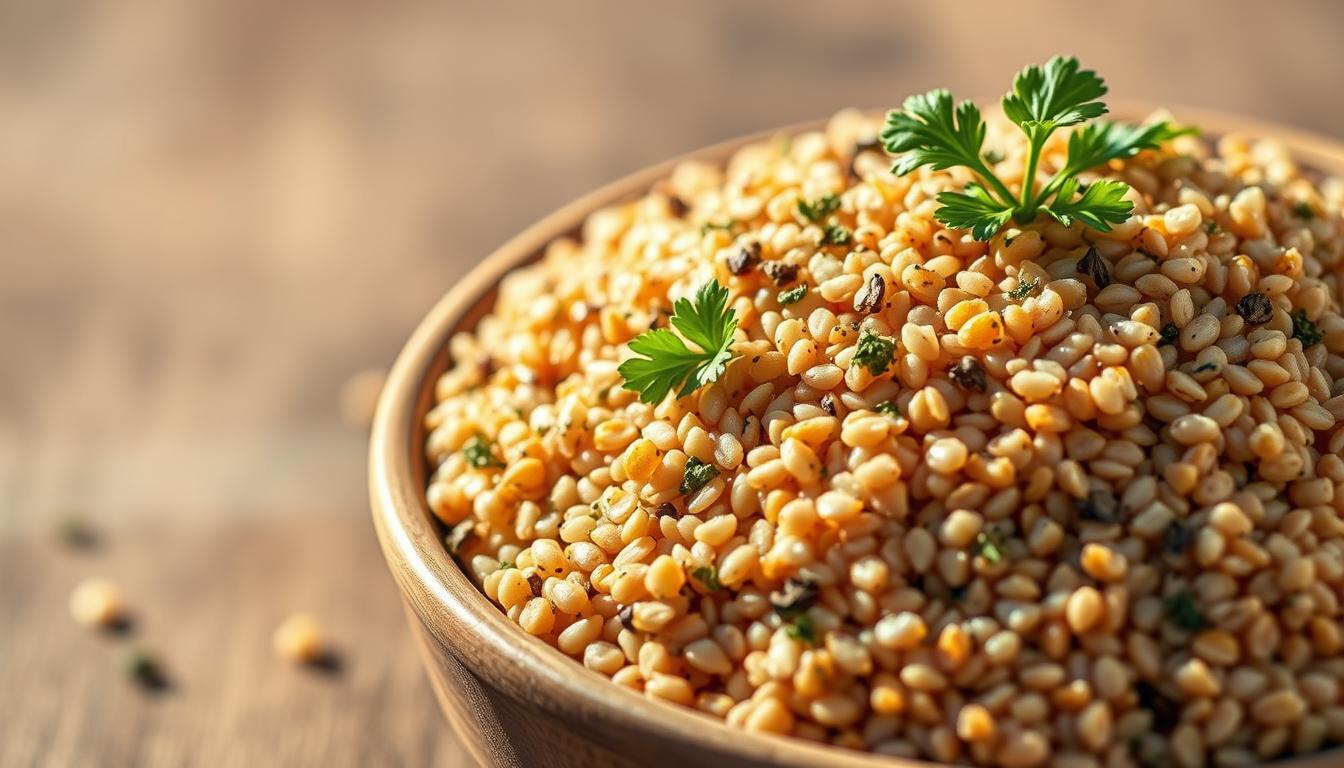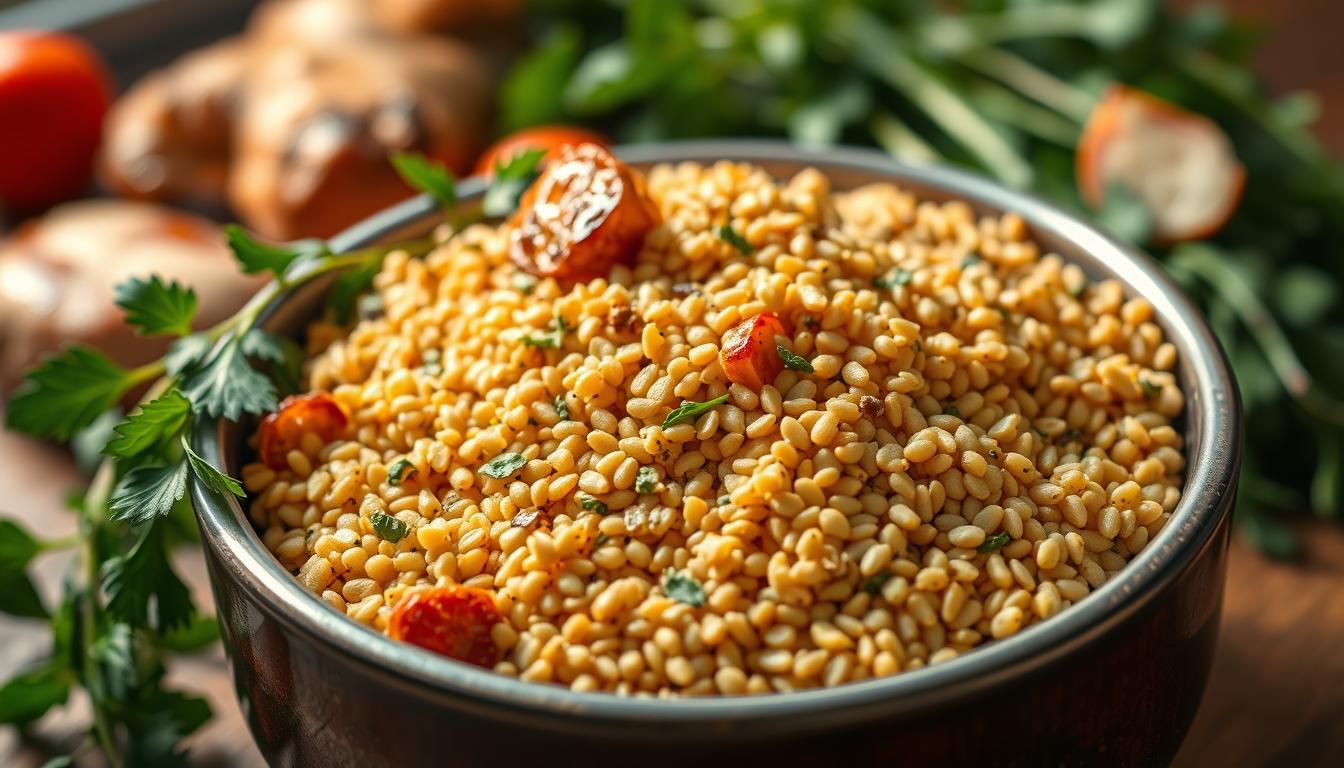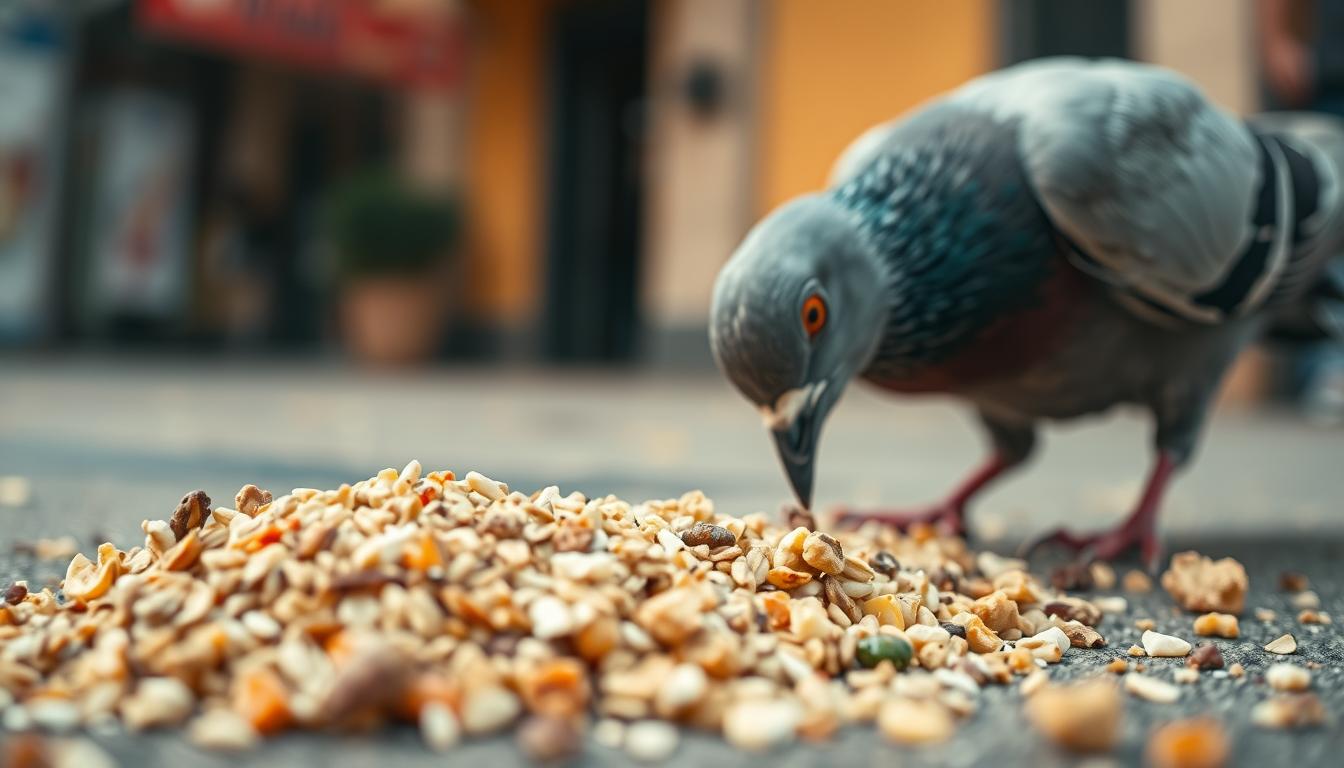Have you ever wondered if your furry friend can enjoy a slice of pizza? While pizza is a universally loved food, sharing it with your dog might not be as harmless as it seems.
Many pet owners have pondered this question, especially during cozy nights in. However, the answer might surprise you. While a tiny taste of plain crust might seem harmless, most pizzas contain ingredients like garlic and onion that can pose serious health risks for your dog.
According to reputable sources such as VCA Hospitals and Purina, even small amounts of these ingredients can lead to gastrointestinal irritation and other complications. This article will explore both the appeal and the potential dangers of sharing pizza with your dog, covering nutritional facts, ingredient breakdowns, and healthier alternatives.
So, before you offer that slice, consider the hidden risks lurking in every bite. Your dog’s health depends on it.
Table of Contents
The Canine Craving Conundrum: To Share or Not to Share Pizza
The allure of pizza is undeniable, but does it hold the same appeal for your furry companion? Pizza captivates our senses with its savory aroma and vibrant appearance, making it a universal favorite. For dogs, the enticing smells and sights of a fresh slice can be just as irresistible.
Cheese and meat, key ingredients in pizza, are particularly tempting for dogs. These components not only satisfy their taste buds but also trigger a strong instinctual response. However, what makes pizza a delightful treat for humans can pose serious risks for your pet.
Ingredients like garlic and onion, commonly found in pizza, are toxic to dogs. These can cause gastrointestinal distress and other health issues. While a small crust might seem harmless, the cumulative effect of harmful toppings can lead to severe complications.
Sharing food with your dog may seem like a natural act of affection, but it’s crucial to consider the potential consequences. Your dog’s diet is carefully balanced to meet their specific nutritional needs, and human food can disrupt this equilibrium. Always prioritize your pet’s health by sticking to dog-safe treats and consulting your veterinarian when in doubt.
Key Facts: can dogs have pizza
While a slice of pizza might seem like a harmless treat for your dog, it’s important to consider the potential risks. Pizza contains ingredients that can be harmful to your dog’s health, even in small amounts.
Nutritional Considerations and Hidden Ingredients
Pizza is high in empty calories, salt, and unhealthy fats, which can lead to serious health issues like pancreatitis. These nutritional shortcomings make pizza a poor choice compared to a balanced dog food diet. Hidden ingredients like excessive salt and excessive fats can also be harmful to your dog’s health.
Immediate Health Risks from Harmful Toppings
Certain toppings, such as garlic and onion, are toxic to dogs and can cause severe health problems. According to VCA Hospitals and Purina, even small amounts of these ingredients can lead to serious complications. Symptoms like vomiting, diarrhea, and lethargy can occur, and if left untreated, they can lead to more severe conditions.
It’s crucial to monitor your dog’s behavior after consuming any amount of pizza. If you notice any signs of distress, such as vomiting or lethargy, seek veterinary care immediately. Small amounts may seem harmless, but they can still have a significant impact on your dog’s health.
In conclusion, while pizza may be a delicious treat for you, it’s not a safe or healthy option for your dog. Always prioritize your dog’s diet and consult with your veterinarian if you have any concerns.
Diving Into Pizza Ingredients: What’s Safe and What’s Not
When it comes to sharing pizza with your dog, understanding the ingredients is key. Pizza is made up of three main components: crust, sauce, and cheese. Each of these can impact your dog’s health differently.
Understanding the Composition of Crust, Sauce, and Cheese
The crust is typically made from flour, water, yeast, and salt. While plain crust might seem harmless, store-bought versions often contain added sugars and preservatives. The sauce usually includes tomatoes, which are safe for dogs in small amounts, but some recipes add onion or garlic, which are toxic.
Cheese, a favorite for many, can be problematic. Dogs may experience digestive issues if they’re lactose intolerant. Even a small amount of cheese can lead to discomfort.
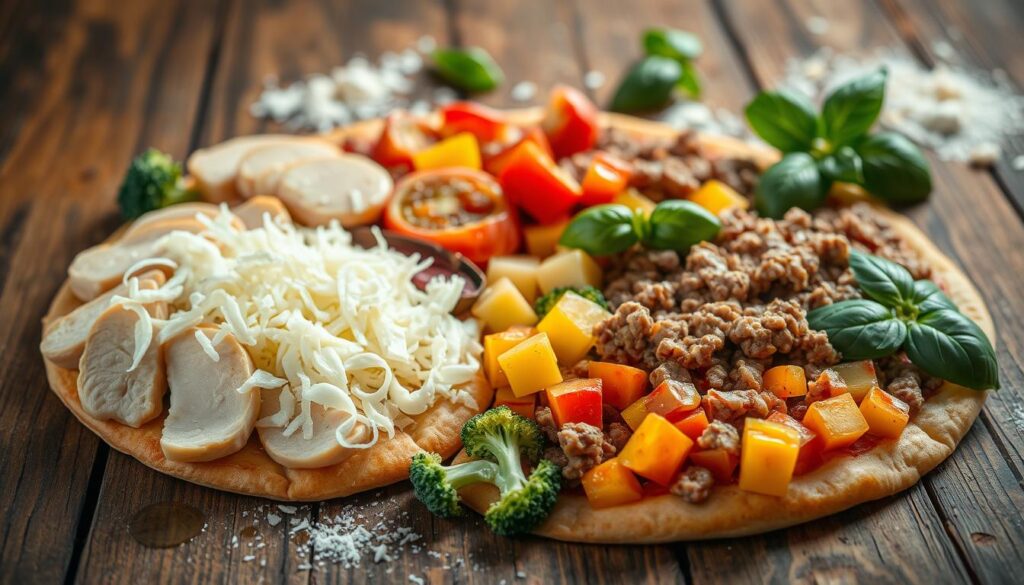
The Dangers of Onions, Garlic, and Excess Salt
Onions and garlic belong to the Allium family and contain compounds that can damage your dog’s red blood cells. According to studies by Purina and VCA Hospitals, even small amounts can cause serious health issues. Symptoms include vomiting, lethargy, and an elevated heart rate.
Excess salt is another concern. High sodium intake can lead to dehydration and, in severe cases, salt poisoning. Keep an eye out for signs like excessive thirst or tremors.
Always check the ingredient list and consider making a homemade, dog-friendly version if you want to share a special treat. Your dog’s diet should be carefully managed to ensure their health and well-being.
Watching for Health Issues: From Obesity to Pancreatitis
As a dog owner, it’s crucial to recognize the potential health risks linked to feeding your pet pizza. High-fat, greasy foods can severely upset your dog’s stomach, leading to serious conditions like pancreatitis and obesity.
How High Fat and Grease Impact Your Dog’s Stomach
High-fat foods, such as pizza, can trigger pancreatitis in dogs. This condition causes inflammation of the pancreas, leading to symptoms like vomiting, diarrhea, and lethargy. According to VCA Hospitals, even small amounts of fatty foods can spark these issues, especially in dogs with pre-existing conditions.

Obesity is another significant risk. Pizza is high in calories, and regular consumption can lead to weight gain, increasing the likelihood of diabetes, joint problems, and heart disease. Maintaining a balanced diet is essential to prevent these long-term health problems.
Signs It’s Time to Contact Your Veterinarian
If your dog shows severe symptoms after eating pizza, such as persistent vomiting, bloody diarrhea, or difficulty breathing, seek veterinary care immediately. These signs can indicate serious complications like pancreatitis or salt poisoning, which require prompt treatment.
Monitor your dog’s behavior closely. Lethargy, loss of appetite, or excessive thirst are red flags. Early intervention can prevent minor issues from escalating into major health crises.
Smart Choices: Safe Treats and Pizza-Inspired Alternatives for Your Dog
While pizza isn’t a safe option for your dog, you can still satisfy their curiosity with healthier, homemade alternatives. These treats mimic the flavors of pizza without the risks, ensuring your pet enjoys a fun and safe snack.
Homemade, Dog-Friendly Recipe Ideas
Here are some easy-to-make recipes that your dog will love:
- Peanut Butter and Sweet Potato Treats: Made with whole wheat flour, mashed sweet potatoes, and peanut butter, these treats are both delicious and nutritious.
- Turkey and Carrot Biscuits: Combine ground turkey with grated carrots and whole wheat flour for a tasty, healthy snack.
- Sweet Potato and Chicken Jerky: Slice sweet potatoes thinly and bake until crispy, then serve with diced, cooked chicken for a protein-packed treat.
These recipes use fresh, wholesome ingredients, avoiding harmful additives found in traditional pizza. Always consult your veterinarian before introducing new foods to ensure they align with your dog’s dietary needs.
By choosing these alternatives, you can give your dog a special treat that’s both enjoyable and safe. Remember, moderation is key, even with healthier options, to maintain your dog’s balanced diet.
Conclusion
Sharing food with your pet can be tempting, but when it comes to pizza, it’s best to think twice. As outlined in this article, pizza poses significant health risks for your dog due to harmful ingredients like onion and garlic, which can cause severe reactions.
The high-fat content in pizza increases the risk of pancreatitis and obesity in dogs. Even a small slice can lead to serious health issues, making it crucial to monitor your dog for symptoms like vomiting or lethargy if they consume pizza.
Instead of pizza, opt for healthier, dog-specific treats. If your dog accidentally eats pizza, watch for signs of distress and consult your veterinarian immediately. Always prioritize your pet’s diet and consult with your vet when introducing new foods.
In conclusion, while pizza is delicious for humans, it’s not safe for your dog. Choose safer alternatives and maintain a balanced diet for your pet’s well-being. Your dog’s health depends on making informed choices about their food.
FAQ
What are the immediate health risks if my dog eats pizza?
Eating pizza can cause stomach upset, including diarrhea or vomiting, especially if your dog consumes high-salt toppings or fatty ingredients. Onions and garlic, common pizza toppings, are toxic to dogs and can lead to serious health issues over time.
Are there any pizza ingredients safe for my dog to eat?
Plain pizza crust (without seasoning) and small amounts of low-fat cheese are generally safe in moderation. However, avoid any crusts with garlic butter or seasonings, as these can be harmful to your dog.
How much pizza is too much for my dog?
Even a single slice of pizza can be too much for smaller breeds due to its high calorie and high fat content. Large breeds should also avoid pizza to prevent obesity and pancreatitis risks.
Can pizza cause long-term health problems in dogs?
Regularly feeding your dog pizza can contribute to weight gain and diet-related issues. The high salt and high sugar content in pizza can also lead to more severe health conditions, such as kidney disease or diabetes, if consumed frequently.
What should I do if my dog accidentally eats pizza?
Monitor your dog for signs of illness, such as vomiting, diarrhea, or lethargy. If you notice any unusual symptoms or if your dog has eaten toppings like onions or garlic, contact your veterinarian immediately for advice.
Are there any pizza-inspired treats safe for my dog?
Yes, you can make homemade dog-friendly treats using ingredients like plain yogurt, peanut butter, and pumpkin. These alternatives satisfy your dog’s cravings without the risks associated with pizza.
Can pizza dough be harmful to dogs?
Uncooked pizza dough is dangerous for dogs because it can expand in their stomach, causing severe discomfort or even blockages. Baked dough is safer but should still be avoided due to its high carbohydrate content.
How can I prevent my dog from eating pizza?
Keep pizza out of your dog’s reach and avoid feeding them table scraps. Distract your dog with healthy, dog-specific treats to satisfy their curiosity and prevent temptation.
Are tomato-based pizza sauces safe for dogs?
Small amounts of plain tomato sauce are generally safe, but many store-bought sauces contain added sugar and salt, which can be harmful to dogs. Always check the ingredients before sharing.
Source Links
- Dog Ate Bread Dough? Here’s What to Do – https://blog.hollyhammersmith.com/my-dog-ate-bread-dough/
- What Not to Share: People Foods That Can Harm Your Dog – https://woofcrate.ca/blogs/woofpost-blog/what-not-to-share-people-foods-that-can-harm-your-dog?srsltid=AfmBOooyN5clrPRGy_vwJuIktxzjZzRiwKiREYI3H1cwZYFWV4BSg0tU
- How to Hike Crested Butte to Aspen Through Iconic Maroon Bells — Colorado Hikes and Hops – https://www.coloradohikesandhops.com/blog/hiking-crested-butte-to-aspen-maroon-bells
- Popeyes’ spicy chicken sandwich is officially coming back – WTOP News – https://wtop.com/gallery/food-restaurant/popeyes-spicy-chicken-sandwich-is-officially-coming-back/
- Can Dogs Eat Pizza Crust? Risks and Safe Alternatives – https://www.tryoriginlabs.com/blogs/pet/the-ultimate-guide-can-dogs-have-pizza-crust?srsltid=AfmBOoraPgquWbmMdJMLzpJ0FdIDJKuC9JEEgKzXXtu9Tr8NT8Qaxj47
- Can Dogs Eat Pizza Rolls? Vet-Verified Nutrition Facts & Concerns – Dogster – https://www.dogster.com/dog-nutrition/can-dogs-eat-pizza-rolls
- Can dogs eat pizza crust? – https://wamiz.co.uk/dog/advice/182023/can-dogs-eat-pizza-crust
- Can Dogs Eat Pizza Crust? Risks and Safe Alternatives – https://www.tryoriginlabs.com/blogs/pet/the-ultimate-guide-can-dogs-have-pizza-crust?srsltid=AfmBOorht2vewrsMR9OuaFvwTgT9Kb2bMgbeVQzZUCF-cvwpat5jn_dZ
- What Not to Share: People Foods That Can Harm Your Dog – https://woofcrate.ca/blogs/woofpost-blog/what-not-to-share-people-foods-that-can-harm-your-dog?srsltid=AfmBOooextOxY61BYz85ikyG3Cras8QP1cc78H0a_XWyFH9T32OLvCQ4
- Margherita Pizza from Domino’s: Allergens, Calories, Fats | Curex – https://getcurex.com/food-allergy/margherita-pizza?srsltid=AfmBOopkukvkEHqQC5lAA7o_H9M0_hh6YdSxA3LgsnEGgfdsOW8pejTW
- Pancreatitis in dogs and cats – Best for Pet – https://bestforpet.co.nz/pet-advice/pancreatitis/
- Can My Dog Eat Pizza? What To Do If Your Dog Eats One? – https://vetgenpharmaceuticals.com/what-to-do-if-your-dog-eats-pizza/?srsltid=AfmBOooEhmZMqruQq6UCiTb9ifUmurZGUBmg6efnZUvs_AD6poltznPl
- Can Dogs Eat Pizza Hut Pepperoni Pizza? A Vet’s Perspective – https://blog.tryfi.com/can-dogs-eat-pizza-hut-pepperoni-pizza/
- Apple and Cheese Dog Bone Pizza Recipe: A Fun and Healthy Treat for Your Pup – https://mydogrecipe.com/apple-and-cheese-dog-bone-pizzas/
- Pepperoni Dog Treats – https://bullystickscentral.com/blogs/tips-for-dog-owners/pepperoni-dog-treats?srsltid=AfmBOoqTmSq0eWC0-hGCv8SXtHZdLny9fUU73V63Nf2ty_QTnwIYF_gx
- Can Dogs Eat Pizza? Vet-Verified Nutrition Facts & FAQ – Dogster – https://www.dogster.com/dog-nutrition/can-dogs-eat-pizza
- Can Dogs Eat Pizza Crust? Risks and Safe Alternatives – https://www.tryoriginlabs.com/blogs/pet/the-ultimate-guide-can-dogs-have-pizza-crust?srsltid=AfmBOor0bEyi-PIqD616QvS2zgmaUU7HZtPlMM_Q7GxykaHo60UqVYCv

